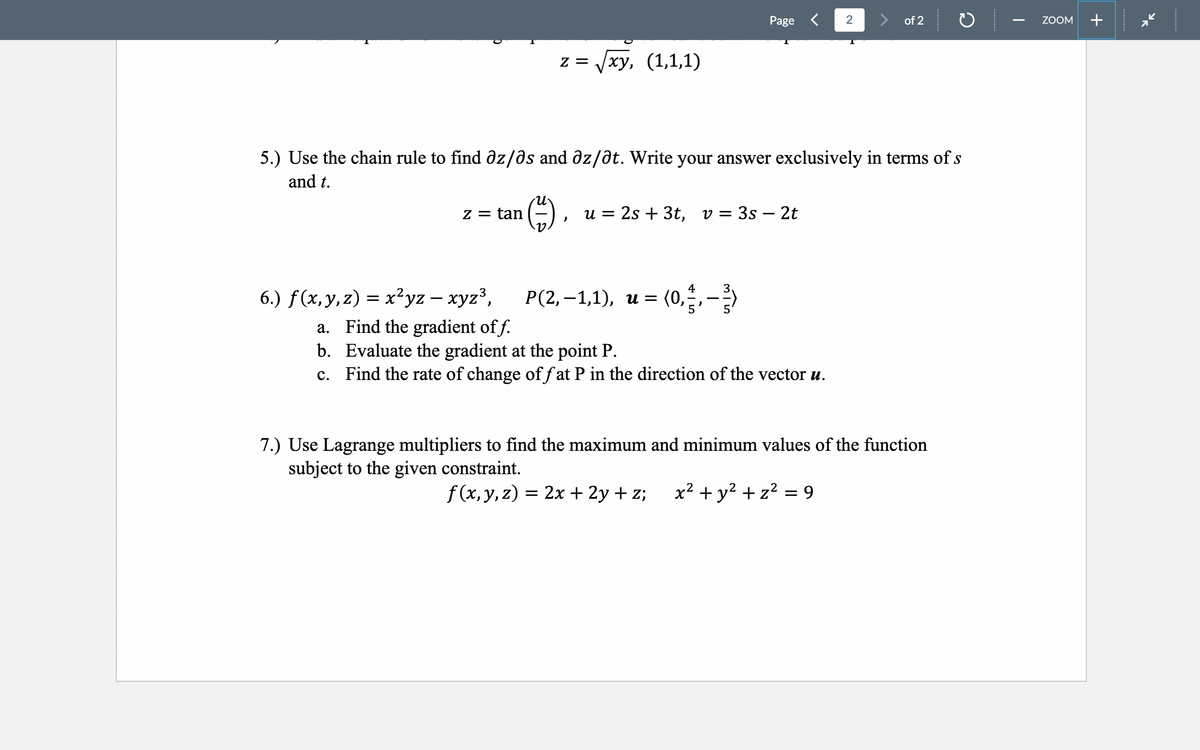7.) Use Lagrange multipliers to find the maximum and minimum values of the function subject to the given constraint. f (x,y, z) = 2x + 2y + z; x² + y? + z? = 9
7.) Use Lagrange multipliers to find the maximum and minimum values of the function subject to the given constraint. f (x,y, z) = 2x + 2y + z; x² + y? + z? = 9
Algebra & Trigonometry with Analytic Geometry
13th Edition
ISBN:9781133382119
Author:Swokowski
Publisher:Swokowski
Chapter6: The Trigonometric Functions
Section6.6: Additional Trigonometric Graphs
Problem 78E
Related questions
Question
can you please do number 7 and show me step by step.

Transcribed Image Text:Page <
> of 2
ZOOM
+
= Z
ху, (1,1,1)
5.) Use the chain rule to find əz/ðs and ðz/ðt. Write your answer exclusively in terms of s
and t.
zan ).
z = tan
u = 2s + 3t, v = 3s – 2t
6.) f(x,y,z) = x²yz – xyz',
Р(2, —1,1), и —
= (0.;--)
a. Find the gradient of f.
b. Evaluate the gradient at the point P.
c. Find the rate of change of f at P in the direction of the vector u.
7.) Use Lagrange multipliers to find the maximum and minimum values of the function
subject to the given constraint.
f (x, y, z) = 2x + 2y + z;
x² + y² + z² = 9
Expert Solution
This question has been solved!
Explore an expertly crafted, step-by-step solution for a thorough understanding of key concepts.
Step by step
Solved in 2 steps with 1 images

Recommended textbooks for you

Algebra & Trigonometry with Analytic Geometry
Algebra
ISBN:
9781133382119
Author:
Swokowski
Publisher:
Cengage

Algebra & Trigonometry with Analytic Geometry
Algebra
ISBN:
9781133382119
Author:
Swokowski
Publisher:
Cengage